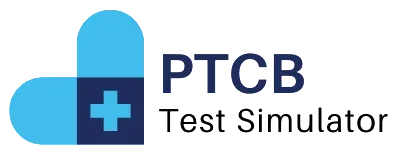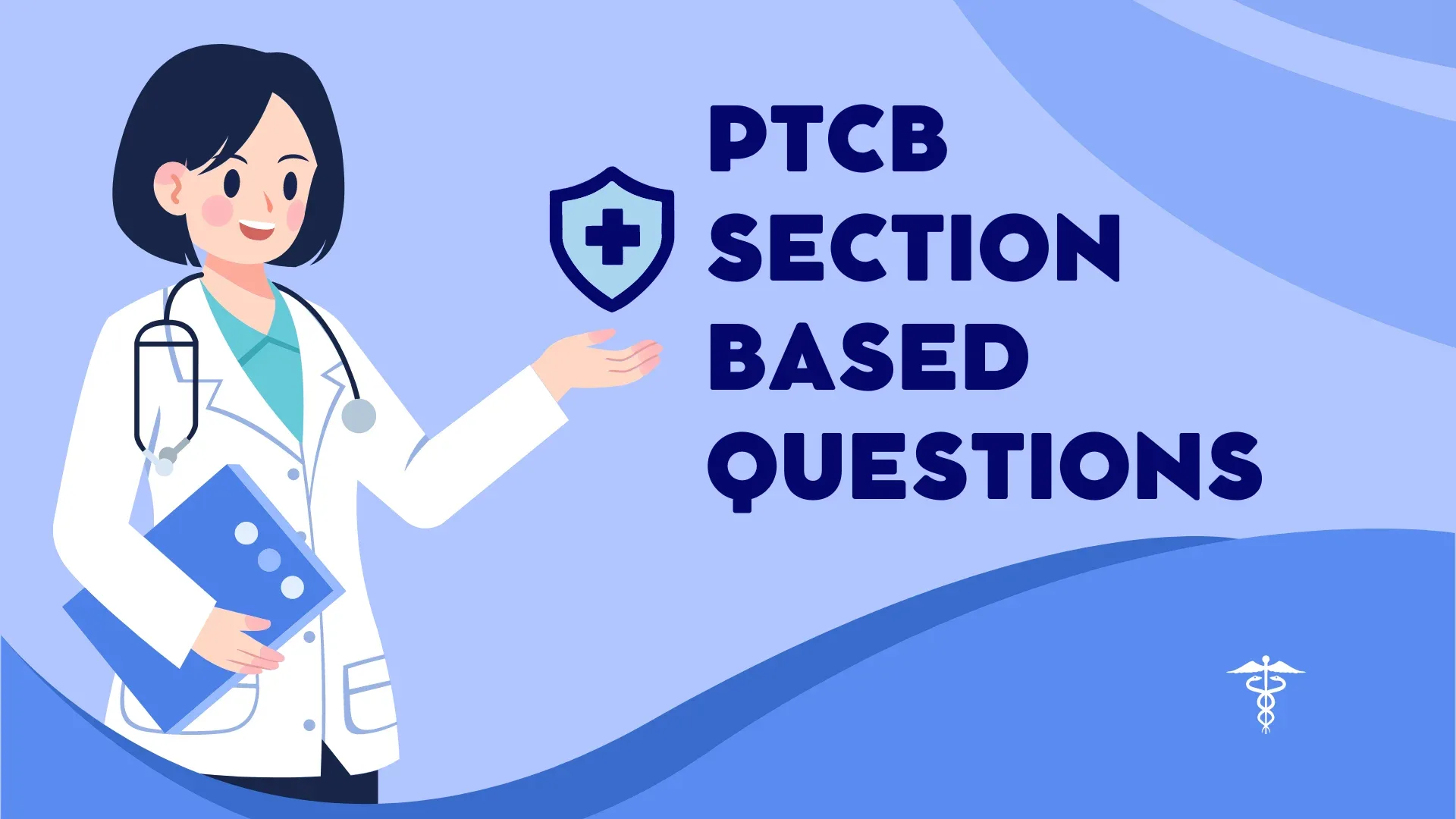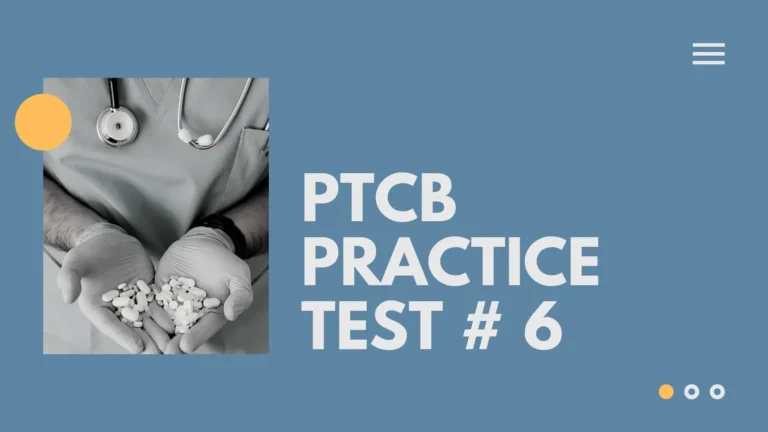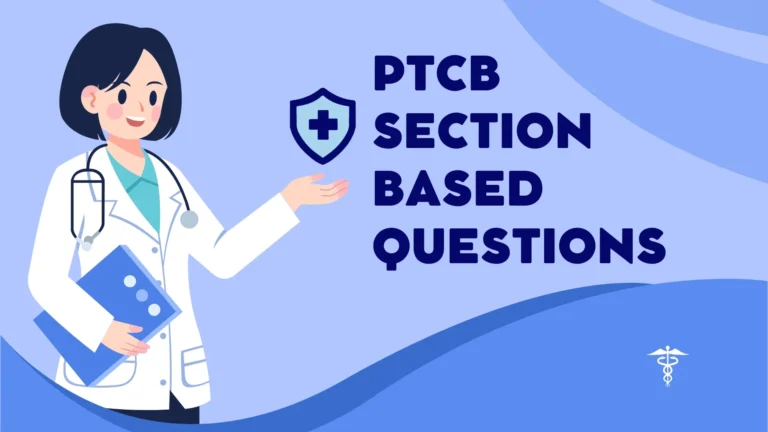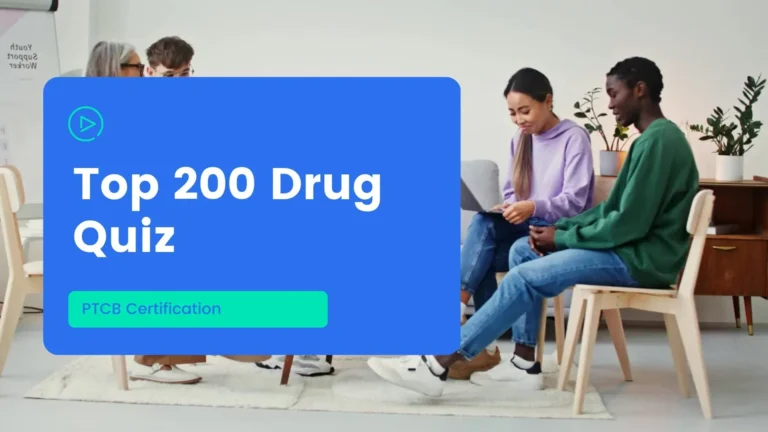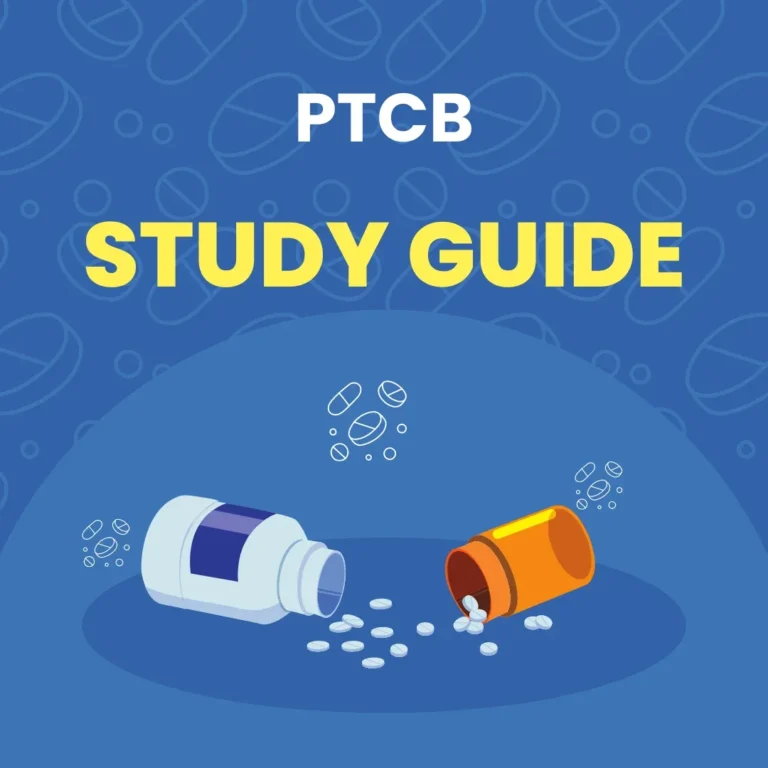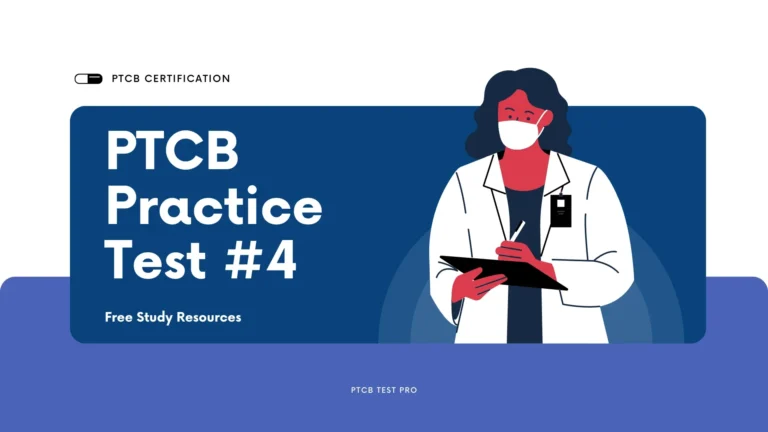Mechanisms Quiz
The PTCB Free Practice Test, tests pharmacy technician’s knowledge, skills and abilities. This includes a thorough understanding of the drug mechanisms. They are ways that medications can interact with your body and produce therapeutic effects. We will focus in this article on “Mechanisms” Quiz, providing you with a PTCB Practice Test for free to help prepare you for the test. These concepts will help you prepare for the PTCB Exam and for your pharmacy career.
Try More Practice Tests
What is a drug mechanism?
In drug mechanisms, we refer to processes by which medication achieves its intended effect. It is crucial to understand how certain drugs act on specific enzymes and receptors in the human body. It is important for pharmacists to understand these mechanisms, because they impact medication safety, patient interactions, and counseling.
PTCB Quiz: Practice the Mechanisms Quiz for Free
You can take a free PTCB Practice Test that focuses on the mechanisms of drugs. Test your knowledge with this quiz and see where you need to study more.
Question 1: What is the mechanism of NSAIDs?
Nonsteroidal anti-inflammatory drugs (NSAIDs) reduce inflammation and pain by inhibiting which enzyme? A) Cyclooxygenase (COX) B) Angiotensin-converting enzyme (ACE) C) Monoamine oxidase (MAO) D) Phosphodiesterase (PDE)
Answer: A) Cyclooxygenase (COX)
Explanation NSAIDs like ibuprofen, aspirin and other NSAIDs work by blocking cyclooxygenase. An enzyme that is responsible for the production of prostaglandins (which cause inflammation and pain) inhibits cyclooxygenase. It is essential to understand this mechanism for the PTCB Practice Test.
SSRIs: What is their mechanism?
Which neurotransmitter is increased by SSRIs to counteract depression? Serotonin A) Dopamine C) Norepinephrine Acetylcholine
Answer: B) Serotonin
Explanation Serotonin-boosting SSRIs such as fluoxetine or sertraline work by inhibiting serotonin’s reuptake and increasing serotonin availability within the synaptic cavity. Serotonin’s increased activity may contribute to antidepressant properties.
Mechanism of ACE inhibitors
Angiotensin-converting enzyme (ACE) inhibitors help lower blood pressure by blocking the conversion of which molecule? A) Angiotensin I to Angiotensin II B) Proinsulin to Insulin C) Glucose to Glycogen D) ATP to ADP
Angiotensin I and Angiotensin I II
Explanation Lisinopril and other ACE-inhibitors work by blocking conversion of angiotensinI to angiotensinII. This is an important vasoconstrictor. This results in vasodilation and a lower blood pressure. The PTCB’s Free Practice Test covers this topic.
Statins are a class of drugs that work by a mechanism.
The liver enzyme that reduces cholesterol is Glucokinase. HMG-CoA Reductase, Glucokinase, Acetylcholinesterase and Hexokinase.
Answer: A) HMG-CoA reductase
Explanation The statins, atorvastatin simvastatin inhibit HMG-CoA reductase an enzyme that is involved with cholesterol synthesis. The PTCB’s Free Practice Test is an excellent way to learn about this topic.
Proton Pump Inhibitors Mechanism
Which cellular structure is inhibited by proton pump inhibitors to reduce stomach acids? (A) Hydrogen/potassium A ATPase (B) Sodium/potassium A ATPase(C) Calcium Channels D) potassium channels
Answer: A) Hydrogen/potassium ATPase
Explanation The PPIs, such as omeprazole (and esomeprazole), work by inhibiting hydrogen/potassium enzymes in the stomach. This decrease in acidity helps with conditions such as gastroesophageal reflux disease (GERD) or ulcers.
Answer 6: What are the mechanisms of Insulin?
The hormone insulin regulates blood glucose by helping glucose to enter which cell? A Muscles, fat and red blood cells. B Neurons. C Red blood cells. D Hepatocytes.
Answer : A. Muscle and Fat Cells
Description: The hormone insulin, which is used to treat diabetes, helps glucose enter muscle and fat tissue, thus reducing the blood glucose level. The PTCB Practice Test relies on your understanding of this mechanism.
The Mechanism of Beta-Blockers
The beta-blockers atenolone, and metoprolol lower the heart rate because they block which receptor type? B) Alphaadrenergic or Dopamine Receptors C) Serotonin-Receptors
Answer : B) Beta-adrenergic receptors
Explanation The beta-blockers work by blocking the beta-adrenergic receptors. This reduces blood pressure and increases heart rate. This medication is often prescribed to treat heart problems and hypertension.
PTCB free practice test preparation tips
Here are some tips on how to effectively prepare for your PTCB exam and, in particular, the section dealing with drug mechanisms.
- Drug Class Study Familiarize with the different classes of medications and their mechanism of action. It will allow you to understand how drugs are used and the effects they have.
- Flashcards – Create cards with the drug names and mechanisms. This can be a great way to strengthen your knowledge when preparing for PTCB’s Free Practice Test.
- Practice by taking Quizzes Regularly complete quizzes like the PTCB Free Practice test to measure your knowledge and progress.
- Join Study groups: You may want to join study groups and online forums, where you can share study tips or discuss drug mechanisms with those preparing for PTCB.
- Ask Pharmacists : To gain a better understanding of the drug mechanism, it is best to consult seasoned pharmacists.
Following these tips and regularly practicing with the PTCB Practice Test will increase your confidence and knowledge, preparing you for the Pharmacy Tech Certification test.
You can also read our conclusion.
Pharmacy technicians must understand the mechanisms of drugs, since they impact patient safety. This PTCB Practice Test covers various drug classes as well as their mechanisms of actions. Focusing on these subjects and practicing similar quizzes will help you to pass the Pharmacy Technologist Certification Exam. You’re on your way to a successful preparation.
